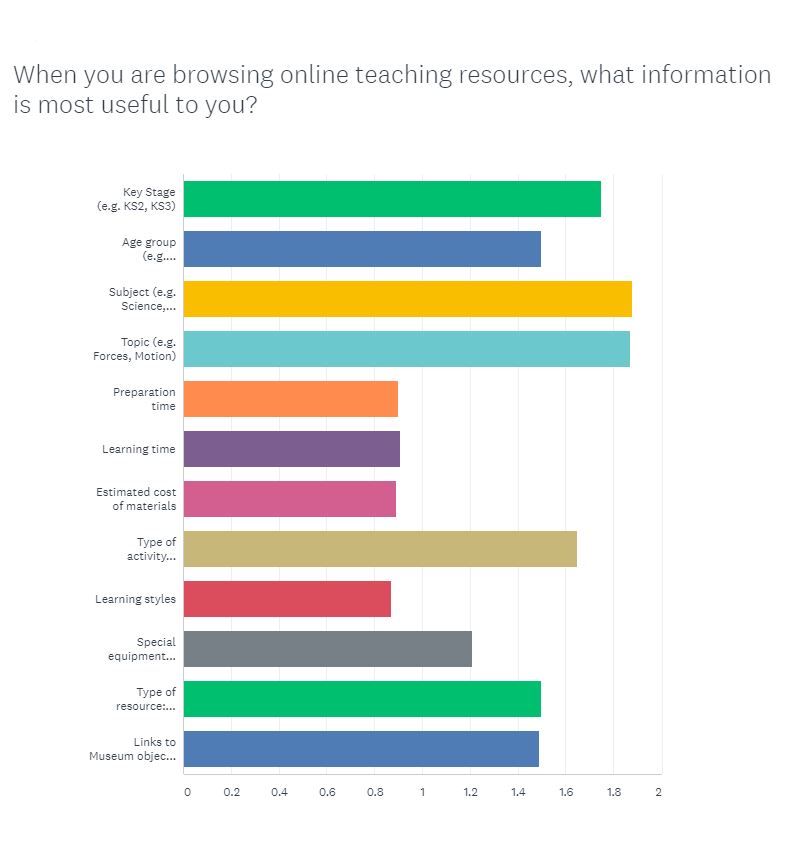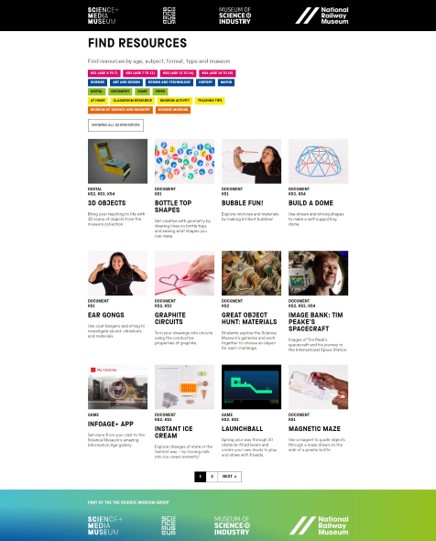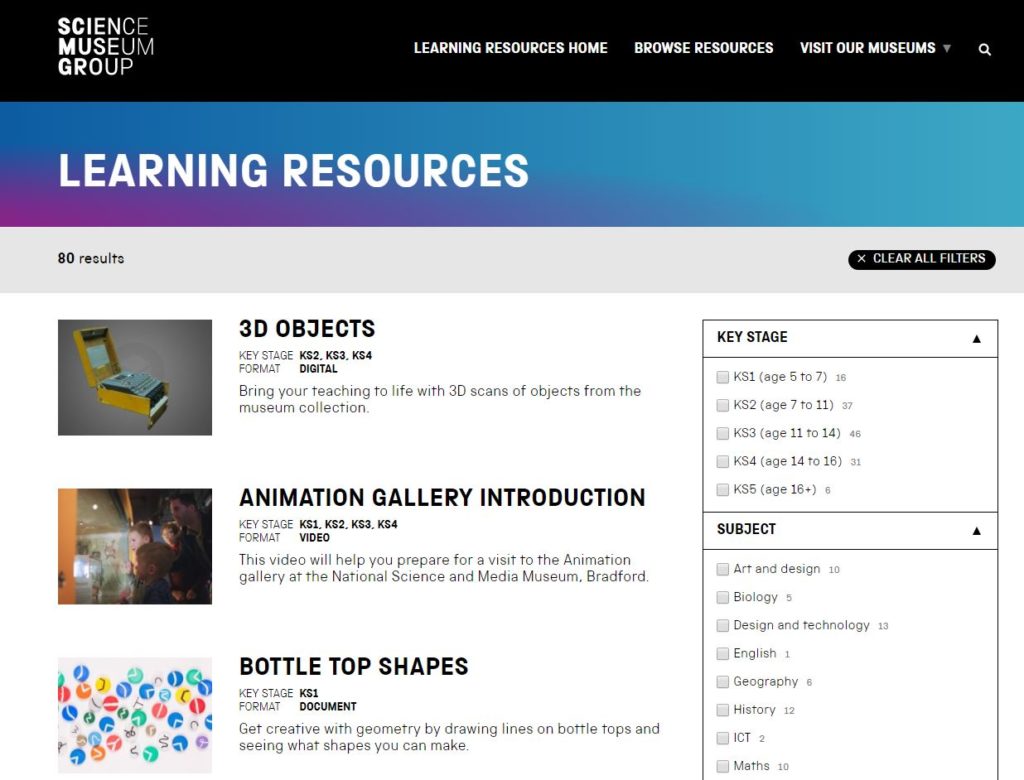A key objective of the Science Museum Group’s Learning strategy is to develop authoritative, attractive and useful resources that encourage schools to teach in more creative ways, and invite them to use our museums as a resource. These learning materials are designed to enhance and support the experience of visiting our museums or facilitate independent learning at home, on the move and in the classroom.
We have a growing number of such resources, from PDFs and videos through to games and other novel formats. In order to improve how Learning audiences access these resources, we’re currently restructuring our digital platforms. The first phase of this work concerns our school and home educator audiences. Our new learning resources website for teachers, which launched last year and is being continually iterated, is the outcome of several months of research, planning and user testing. Our research aimed to discover:
- What can we do to make the Science Museum Group learning resources website a helpful destination for educators?
- How should resources be presented and classified?
- What language should be used on the website?
The bulk of this research involved a teacher consultation, via an online survey and telephone interviews. We had around 300 educator respondents to the online survey. Questions focused on use of online learning resources from museums and other providers (e.g. TES and BBC Bitesize), preferred resource formats and vocabulary, and preferred ways to browse.

We spoke in more detail with a small sample of survey respondents about how they use online resources and digital technology in the classroom, and also talked through the strengths and weaknesses of a number of competitor websites such as Smithsonian Learning Lab and the Royal Museums Greenwich learning resources site. The insights from these conversations were incredibly helpful and helped confirm our suspicions that there really is no ‘one size fits all’ solution. However, the following themes emerged throughout:
- Teachers don’t see the Science Museum Group websites as a destination for learning resources because they aren’t clearly visible.
- Teachers are very busy and they will only use websites which are easy to navigate and which make it clear how resources will support their teaching.
- It’s essential to be able to filter content by age group, subject/ topic and type of resource, and to view ‘basic info’ about a resource in search results without needing to click through.
Our thinking was also informed by a series of helpful interviews with colleagues working in digital and/or learning roles at the National Archives, Tower Bridge, the Museum of London, Historic Royal Palaces, the V&A and Tate.
Building on these insights, the beta build of the site, which launched in October last year, was driven by the following principles:
- Learning should be prominent in the primary navigation on our museum websites.
- We should provide a high quality, ‘basic’ offer respecting teacher preferences re: formats – including Word, Powerpoint and PDF documents.
- Where possible, we should supplement this basic offer with more innovative content, focusing on video.
- All resources should live within a central, easily searchable database, filterable using the terms which are most meaningful to teachers: age/ key stage, topic, type of activity.

We followed up the beta launch with a round of user testing with 6 teachers (primary and secondary). The main findings which emerged from this were:
- The filter functionality wasn’t helpful. Users didn’t realise that multiple filters could be applied within a category and they often ended up in “no resources found” dead-ends.
- Users expected to be able to free search as well as browse/ filter, with some actively looking for this functionality on the screen.
- The image promos which accompany each result are attractive, but unfortunately they don’t really help users understand what might be behind the click and they could be reduced.
- Users wanted more clarity on the relationship between this website and the Science Museum’s Group other web estate.
- Despite the above, the Net Promoter Score (a measurement of loyalty and recommendation) awarded to the site by these teachers was 33% (research indicates that the average NPS is between 10-15%).
Our next iteration of the site therefore focused on:
- Changing the filter system into a column-based format to bring the filter controls closer to the results and bring listings higher up the page for all screen sizes.
- Making the filter system more intuitive.
- Adding a free search functionality to the header.
- Adding site navigation to the header and simplifying the messaging to clarify that this is a Science Museum Group website.
Here’s what the outcome looks like:

These updates have just launched and we will be continuing to monitor actual usage to make the website more user-friendly, and ultimately to bring our resources to as many educators as possible. We’re also going to be adding a new feature very soon: regular contemporary science news stories.
Visit the learning resources website here.